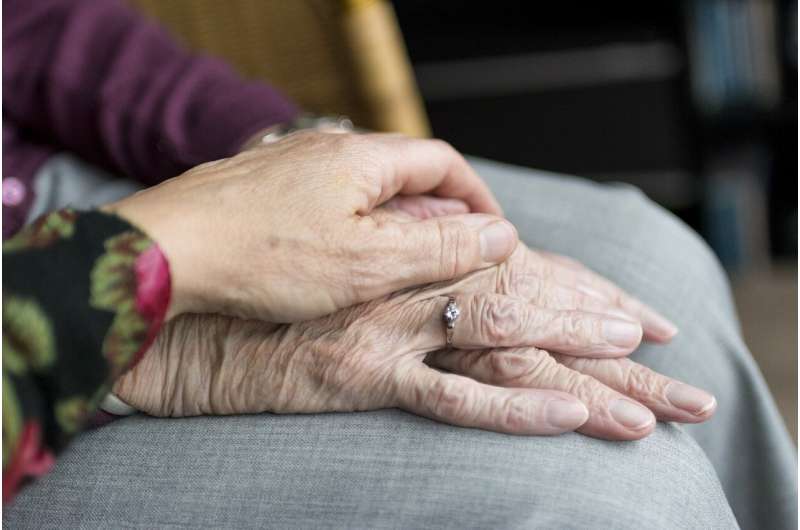Physical frailty syndrome: A cacophony of multisystem dysfunction

In the inaugural issue of the journal Nature Aging a research team led by aging expert Linda P. Fried, MD, MPH, dean of Columbia University Mailman School of Public Health, synthesizes converging evidence that the aging-related pathophysiology underpinning the clinical presentation of phenotypic frailty (termed as "physical frailty" here) is a state of lower functioning due to severe dysregulation of the complex dynamics in our bodies that maintains health and resilience. When severity passes a threshold, the clinical syndrome and its phenotype are diagnosable. This paper summarizes the evidence meeting criteria for physical frailty as a product of complex system dysregulation. This clinical syndrome is distinct from the cumulative-deficit-based frailty index of multimorbiditys.
Physical frailty is defined as a state of depleted reserves resulting in increased vulnerability to stressors that emerges during aging independently of any specific disease. It is clinically recognizable through the presence of three or more of five key clinical signs and symptoms: weakness, slow walking speed, low physical activity, exhaustion and unintentional weight loss.
The authors of this Perspectives article integrate the scientific evidence of physical frailty as a state, largely independent of chronic diseases, that emerges when the dysregulation of multiple interconnected physiological and biological systems crosses a threshold to critical dysfunction that severely compromises homeostasis, or stability among the body's physiological presses. The physiology underlying frailty is a critically dysregulated complex dynamical system. This conceptual framework implies that interventions such as physical activity that have multisystem effects are more promising to remedy frailty than interventions targeted at replenishing single systems.
Fried and colleagues then consider how this framework can drive future research to optimize understanding, prevention and treatment of frailty, which will likely preserve health and resilience in aging populations.
"We hypothesized that when Individual physiological systems decline in their efficiency and communication between cells and between systems deteriorate, this results in a cacophony of multisystem dysregulation which eventually crosses a severity threshold and precipitates a state of highly diminished function and resilience, physical frailty," said Fried, who is also director of the Robert N. Butler Columbia Aging Center.
"The key insight is simply that one's physiological state results from numerous interacting components at different temporal and spatial scales (e.g., genes, cells, organs) that create a whole unpredictably more than the parts," observes Fried.
For example, Fried notes that physical frailty prevalence and incidence has been linked to the interconnected dynamics of three major systems, altered energy metabolism through both metabolic systems, including glucose/insulin dynamics, glucose intolerance, insulin resistance, alterations in energy regulatory hormones such as leptin, ghrelin, and adiponectin, and through alterations of musculoskeletal systems function, including efficiency of energy utilization and mitochondrial energy production and mitochondrial copy number. Notably, across these systems, both energy production and utilization are abnormal in those who are physically frail.
The aggregate stress response system and its subsystems are also abnormal in physical frailty. Specifically, inflammation is consistently associated with being frail, including significant associations with elevated inflammatory mediators such as C-reactive protein, Interleukin 6 (IL-6, and white blood cells including macrophages and neutrophils, among others, in a broad pattern of chronic, low-grade inflammation. Each of these three systems mutually regulate and respond to the others in a complex dynamical system.
The authors recommend that multisystem fitness is needed to maintain resilience and prevent physical frailty, including macro-level interventions such as activities to improve physical activity or social engagement; the latter, apart from contributing to psychological well-being, also can increase physical and cognitive activity.
"There is strong evidence that frailty is both prevented and ameliorated by physical activity, with or without a Mediterranean diet or increased protein intake," noted Fried.
"These model interventions to date are nonpharmacologic, behavioral ones, emphasizing the potential for prevention through a complex systems approach."
"This work, conducted under the leadership of Dr. Linda Fried, is the culmination of nearly two decades of research characterizing the pathophysiology of the frailty syndrome. It should pave the way for further elucidating the underlying mechanisms of frailty pathogenesis," said Ravi Varadhan, Ph.D., Ph.D., Sidney Kimmel Comprehensive Cancer Center, Johns Hopkins University, and a co-author. "The paper postulates that energetics—the totality of the processes involved in the intake, utilization, and expenditure of energy by the organism—is the key driver of frailty. Testing this hypothesis would be an important area of future research in aging."
More information: Fried, L.P., Cohen, A.A., Xue, QL. et al. The physical frailty syndrome as a transition from homeostatic symphony to cacophony. Nat Aging 1, 36–46 (2021). doi.org/10.1038/s43587-020-00017-z














